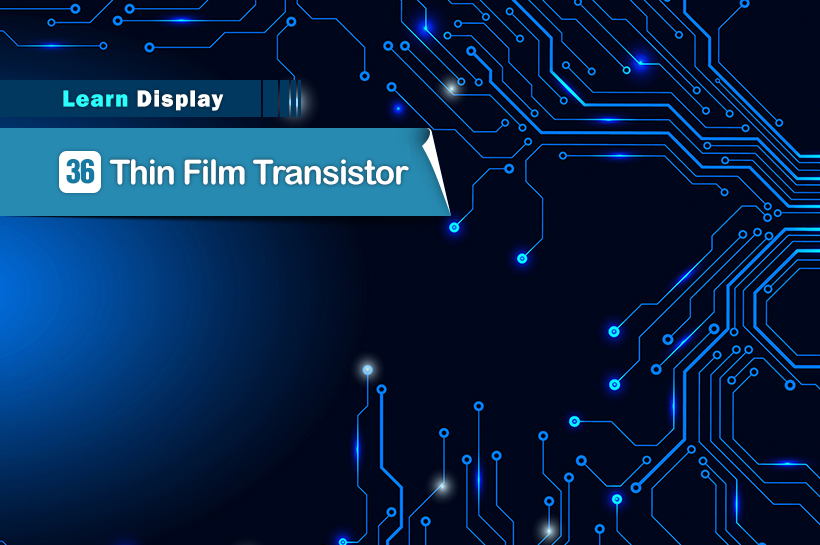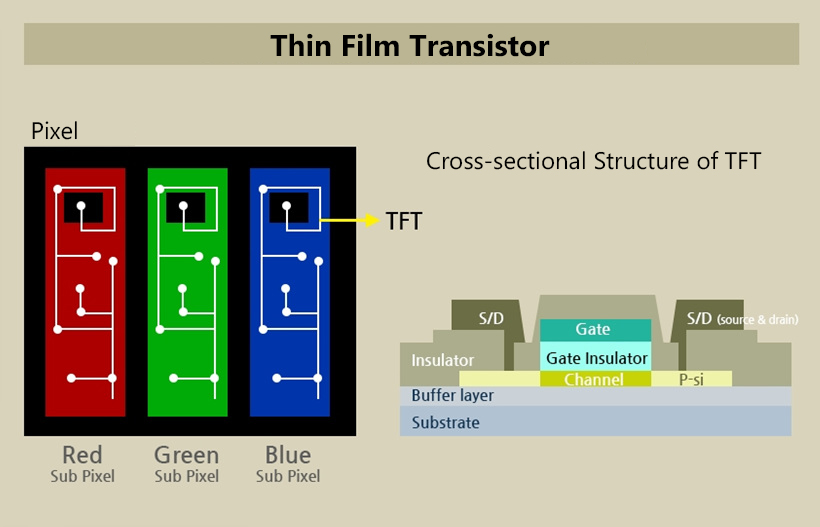
Thin Film Transistor (TFT) is one of a kind of transistor that is made of thin film. A transistor is typically an electronic circuit component composed of semiconductors, which works as a valve to control the flow of electric current.
Thin film transistor in a display controls the brightness of each pixel on a screen. One pixel is composed of sub-pixels in three primary colors - Red(R), Green(G), Blue(B) – and each pixel requires an electric power in order to represent colors in the screen. Thin film transistor is located in each such-pixels and operates pixels when a specific amount of voltage is applied.

Thin film transistor is composed of several layers: Source/Drain, Gate, and Active layer, etc. The gate acts as a switch that regulates the current flowing through the active layer, and the source and drain act to send/receive electrons. By leveraging the gate regulates the voltage, electrons are transported from source to drain. Active layer, deposited on the substrate, enables current flow to help electron transportation.
In OLED panels, the current flowing from TFT passes through each organic layer of R, G, B and emits light, while in LCD panels, light from the backlight unit passes through RGB color filters by the tilt of the liquid crystal.
Thin film transistor is divided by the materials in use – Amorphous Silicon (a-si) and LTPS (Low-Temperature Polycrystalline Silicon). LTPS can make a smaller transistor given that it offers better electron mobility compared to a-si, which makes it possible to drive high-speed circuits and to give the required current within a short time. Therefore, it helps to produce a high resolution of panels and to improve image quality by increasing the aperture ratio. Nowadays, most of the flagship smartphones are using display panel with LTPS.



